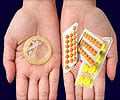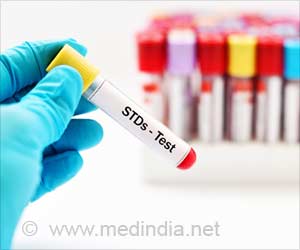A study has deemed that condoms use is associated with moderate protection against herpes simplex virus 2.
Herpes simplex virus 2 (HSV-2) typically causes genital herpes, a chronic, life-long, viral infection.Although studies indicate that consistent condom use reduces the spread of HIV and other sexually transmitted diseases such as chlamydia and gonorrhea, the effectiveness of preventing the transmission of HSV-2 through condom use is less certain.
For the study, Emily T. Martin, M.P.H., Ph.D., of Children's Hospital Research Institute and the University of Washington, Seattle, and colleagues analyzed data from six HSV-2 studies to assess the effectiveness of condom use in preventing the virus.
The studies included three candidate HSV-2 vaccine studies, an HSV-2 drug study, an observational sexually transmitted infection (STI) incidence study and a behavioral STI intervention study.
These yielded results from 5,384 HSV-2-negative individuals (average age 29) at baseline for a combined total of 2,040,894 follow-up days.
More than 66 percent of those who took part in the six studies were male, 60.4 percent were white, 94.1 percent were heterosexual and most reported no prior STIs.
A total of 415 of the individuals acquired HSV-2 during follow-up.
"Consistent condom users [used 100 percent of the time] had a 30 percent lower risk of HSV-2 acquisition compared with those who never used condoms. Risk of HSV-2 acquisition decreased by 7 percent for every additional 25 percent of the time that condoms were used during anal or vaginal sex," the authors said.
The risk of acquiring the virus increased significantly with increasing frequency of unprotected sex acts. There were no significant differences found in condom effectiveness between men and women.
"Based on findings of this large analysis using all available prospective data, condom use should continue to be recommended to both men and women for reducing the risk of HSV-2 acquisition," the authors said.
"Although the magnitude of the protective effect was not as large as has been observed with other STIs, a 30 percent reduction in HSV-2 incidence can have a substantial benefit for individuals as well as a public health impact at the population level," they added.
The report was based on pooled analysis of data from previous studies in the July 13 issue of Archives of Internal Medicine, one of the JAMA/Archives journals.
Source-ANI
TAN















